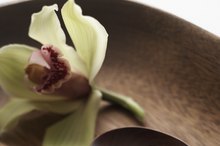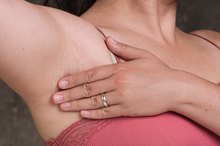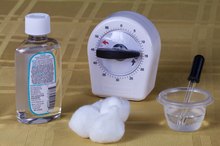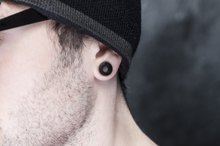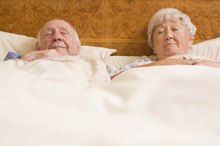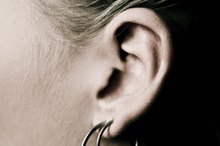How to Clean Ear Wax With Mineral Oil
Earwax is a waxy, yellow substance that is secreted by glands in the inner ear. It helps keep the inner ear dry, and provides protection against bacteria, insects and fungus. When the glands create too much earwax, the inner ear can become blocked, causing earaches, loss of hearing and tinnitus. Luckily, there is a safe and inexpensive way to clean earwax with mineral oil and a few other common household items.
If you are experiencing serious medical symptoms, seek emergency treatment immediately.
Extract the mineral oil from the bottle using an eyedropper. Tilt your head sideways and drop several drops of mineral oil into the ear canal.
Sea Salt Cleanse & Parasites
Learn More
Keep your head tilted until the mineral oil has penetrated deep into the ear. Repeat this twice daily for one week to ensure that the earwax is loosened.
Warm a small amount of tap water to 98.6 degrees F, or as close to it as possible. Fill the rubber bulb syringe with the warmed water. Pull up on your ear with your free hand, and gently squirt a small amount of the warm water into the ear canal.
How to Relieve Clogged Sweat Glands in the Armpit
Learn More
Allow the water to drain out of the ear and into the sink. Check for any clogs of earwax. If none appear, repeat until the clog is removed.
Wipe away all excess water from the outer ear using a towel. Fill the eyedropper with rubbing alcohol, and tilt your head to the side. Drop several drops of rubbing alcohol into the ear canal, and wait for several seconds.
Tilt your head in the other direction, and allow the rubbing alcohol to drain out. This will completely dry the inner ear without the use of cotton swabs.
Tips
If mineral oil is not available, baby oil or olive oil can be used.
Tea tree oil can be used to loosen and remove earwax, as well as kill bacteria and fungus in the ear canal.
Hydrogen peroxide can be used to safely remove earwax. Fill a dropper with the hydrogen peroxide, and put several drops into the ear canal. Wait for several minutes as it dissolves the earwax, and then use a rubber bulb syringe to wash the peroxide out with warm tap water.
Warnings
If the water used in the rubber syringe is too cold, it can cause substantial pain. If it is too hot, dizziness or nausea may ensue. Ensure that the water is as close to 98.6 degrees F as possible for best results.
Related Articles
References
- Mittal A, Kumar S. Role of pH of external auditory canal in acute otitis externa. Indian J Otolaryngol Head Neck Surg. 2014;66(1):86-91. doi:10.1007/s12070-013-0684-0
- Schwartz SR, Magit AE, Rosenfeld RM, et al. Clinical practice guideline (update): Earwax (cerumen impaction). Otolaryngol Head Neck Surg. 2017;156(1_suppl):S1-S29. doi:10.1177/0194599816671491
- Wright T. Ear wax. BMJ Clin Evid. 2015;2015:0504.
Tips
- If mineral oil is not available, baby oil or olive oil can be used. Tea tree oil can be used to loosen and remove earwax, as well as kill bacteria and fungus in the ear canal. Hydrogen peroxide can be used to safely remove earwax. Fill a dropper with the hydrogen peroxide, and put several drops into the ear canal. Wait for several minutes as it dissolves the earwax, and then use a rubber bulb syringe to wash the peroxide out with warm tap water.
Warnings
- If the water used in the rubber syringe is too cold, it can cause substantial pain. If it is too hot, dizziness or nausea may ensue. Ensure that the water is as close to 98.6 degrees F as possible for best results.
Writer Bio
Willow Sidhe is a freelance writer living in the beautiful Hot Springs, AR. She is a certified aromatherapist with a background in herbalism. She has extensive experience gardening, with a specialty in indoor plants and herbs. Sidhe's work has been published on numerous Web sites, including Gardenguides.com.
